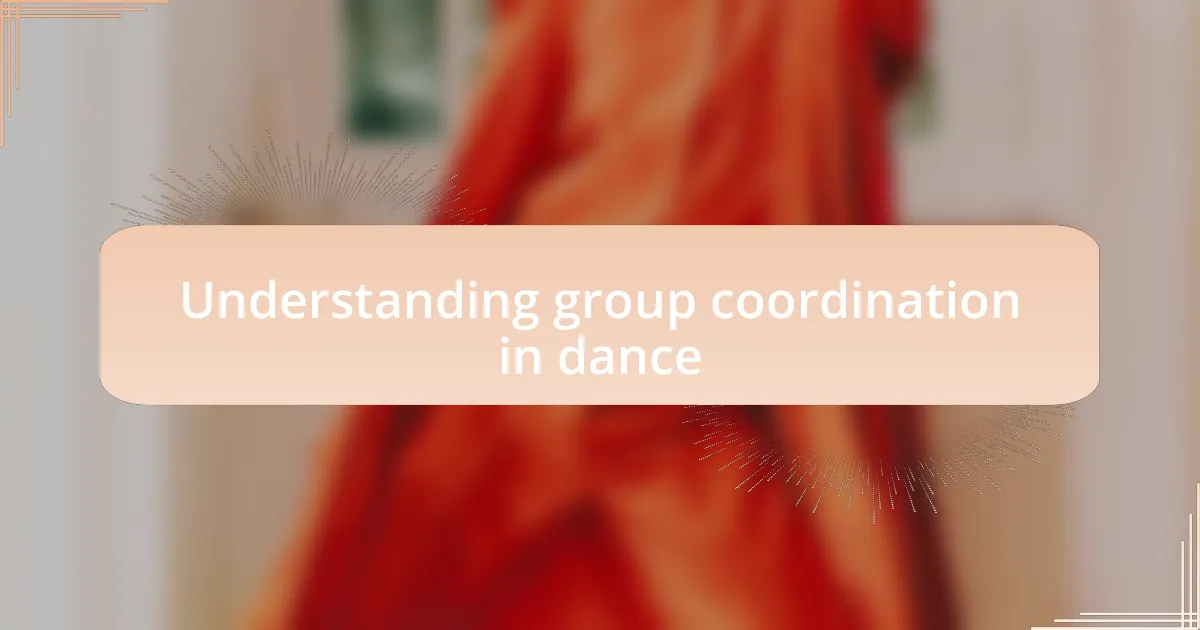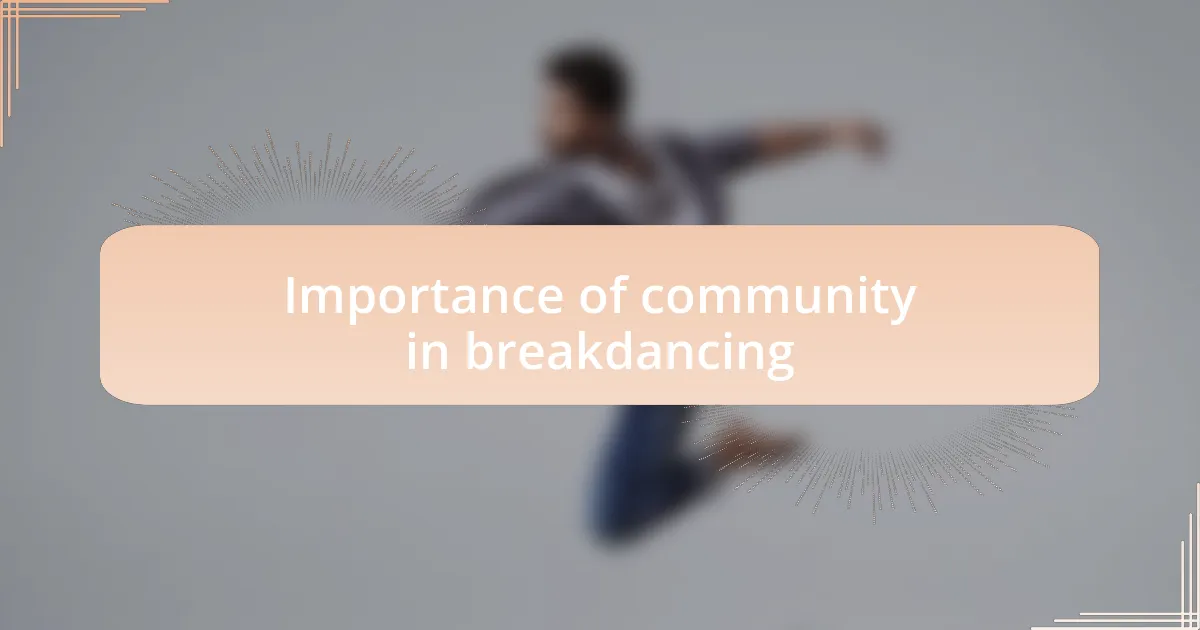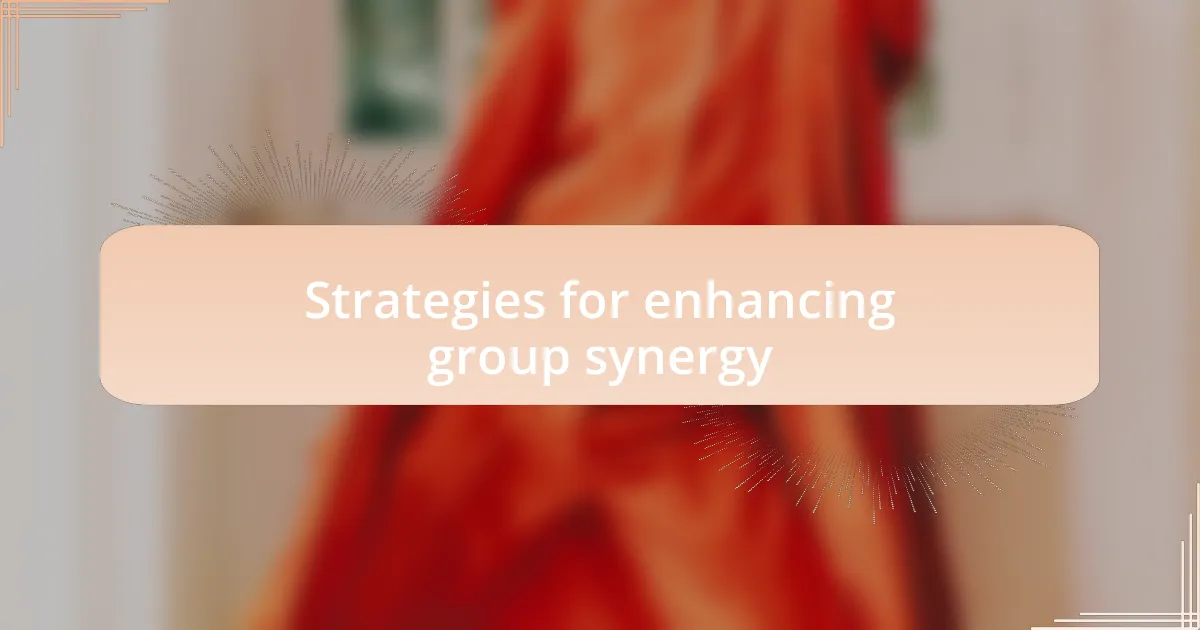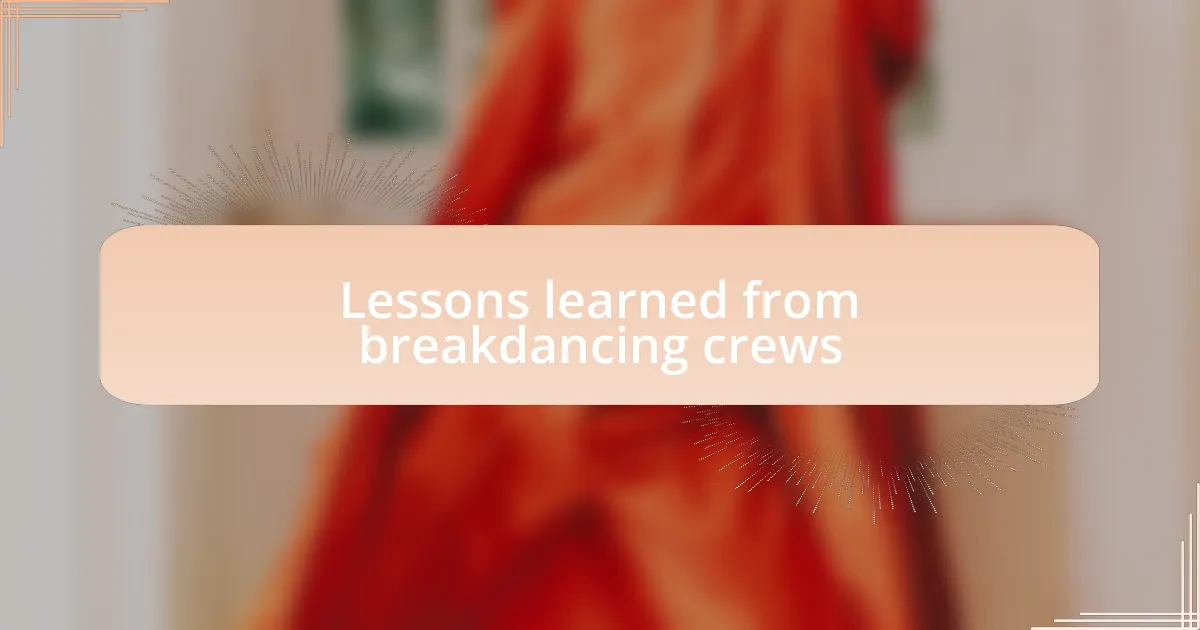Key takeaways:
- Group coordination in dance relies on nonverbal communication and trust, enhancing performance and connection.
- The breakdancing community fosters creativity and growth through shared experiences and mutual support.
- Effective coordination requires clear communication, adaptability, and a willingness to collaborate toward common goals.
- Celebrating individual strengths within a crew leads to richer dynamics and a more inclusive dance community.

Understanding group coordination in dance
Group coordination in dance is pivotal; it’s not just about moving together but about syncing energy and intention. I remember a practice session where we struggled to stay in unison during a challenging sequence. The moment we began to communicate nonverbally, I felt a shift in the atmosphere—our movements flowed seamlessly, and we became an extension of each other.
Have you ever noticed how some crews make complex routines look effortless? That’s that magic of group coordination at work. It’s all about understanding timing and spatial awareness. I’ve often found that when a dancer takes a moment to connect with their partners—whether with a glance or a nod—the entire group feels more cohesive, almost like we’re sharing a pulse.
Think about the last time you danced in a group. Did you feel that unspoken connection—those moments where everyone’s movements felt intertwined? It’s exhilarating to experience that! I find that practicing these moments of connection can elevate a performance, turning ordinary steps into something truly extraordinary.

Importance of community in breakdancing
The breakdancing community thrives on shared passion and a collective spirit that binds dancers together. I recall a time at a local jam when a fellow b-boy encouraged everyone to join in for a cypher—an informal circle where dancers showcase their skills. The energy was infectious; as one person stepped forward, others applauded, creating a sense of belonging that transcended competition. Moments like these remind me just how essential community is in nurturing individual creativity.
Community not only fosters motivation but also accelerates growth. During a recent workshop, I was teamed up with dancers of varying skill levels. By sharing tips and exchanging feedback, we all walked away improved. It struck me how invaluable it is to have a network of support—a place where mistakes are celebrated as learning experiences rather than setbacks. When we uplift each other, it nourishes a culture of continuous improvement.
Can you remember the last time your crew celebrated your achievements? That recognition fuels our drive to push boundaries. In my experience, the warmth of community inspires us to dig deeper and explore new styles. It’s not just about the dance; it’s about forging connections that empower us as artists and as people.

Key elements of effective coordination
Effective coordination in breakdancing hinges on clear communication. During a recent practice session with my crew, one dancer took the lead, sharing his vision for a group performance. His ability to articulate ideas in a simple yet engaging way made it easy for everyone to contribute their thoughts. Have you ever noticed how much smoother a practice goes when everyone is on the same page? That clarity fuels creativity, allowing each dancer to shine without stepping on each other’s toes.
Another crucial element is trust among team members. I remember a time when we took a leap of faith by experimenting with a new routine that involved some risky moves. Each dancer trusted the group to support them, which not only boosted our confidence but also strengthened our bond. It’s fascinating how much more you can achieve when you know your crew has your back. Isn’t it powerful to realize that shared trust can elevate performances beyond what we initially imagined?
Lastly, flexibility plays a vital role in coordination. A few weeks ago, we hit a snag while rehearsing a challenging sequence; something just wasn’t clicking. Instead of sticking to the original plan, we had an open dialogue, discussing adjustments on the fly. I learned that being adaptable not only fosters innovation but also maintains the momentum of our practice. Have you ever changed course mid-routine and found it led to unexpected, amazing results? That willingness to pivot often reveals hidden talents and new dance styles waiting to be discovered.

Strategies for enhancing group synergy
Developing a strong group synergy in breakdancing requires establishing common goals. I recall a session where we collectively decided to participate in a local competition, allowing everyone to bring their ideas for routines. This shared ambition not only sparked excitement, but it also united our training efforts. How often do you find that a mutual aim can ignite energy and creativity within your crew?
Another effective strategy is incorporating regular feedback sessions. After we wrapped up a particularly intense rehearsal last month, we gathered to chat about what worked and what didn’t. Opening the floor to everyone helped us reflect individually while also fostering accountability as a group. This transparent dialogue often leads to breakthrough moments—have you experienced that transformative feeling when constructive criticism drives your practice forward?
Lastly, engaging in team-building exercises outside of regular dance practice can significantly enhance synergy. A few months back, we went bowling together, which may seem unrelated to breakdancing at first glance. However, sharing laughs and challenges outside the studio forged deeper connections among us. Have you ever noticed how bonding activities can translate to better collaboration when it’s time to hit the dance floor? That sense of camaraderie can make a remarkable difference in how smoothly we work as a team.

Lessons learned from breakdancing crews
One significant lesson I’ve learned from breakdancing crews is the power of trust. I remember performing in a crew that had built an unshakeable bond, allowing us to execute complex moves without hesitation. When dancers believe in each other’s skills, it transforms the performance; we become a seamless unit on stage. Isn’t it incredible how trust can enhance not just our dance, but our connections?
Another important takeaway is the value of adaptability within a group setting. I’ve seen crews that can shift their routines on the fly when facing unexpected challenges. During a street showcase, we had to modify our set mid-performance after a teammate’s shoe broke. Instead of panicking, we adjusted seamlessly, which ended up captivating the audience. Have you ever experienced a moment where flexibility turned a potential disaster into a highlight?
Lastly, celebrating each member’s unique strengths can lead to richer group dynamics. In one crew I was part of, we organized showcase nights where each dancer could share their style and influences. It was a beautiful way to learn from one another while building mutual respect. How often do we take the time to recognize what makes each dancer special? Embracing individuality not only enhances creativity but also fosters a stronger, more inclusive community.